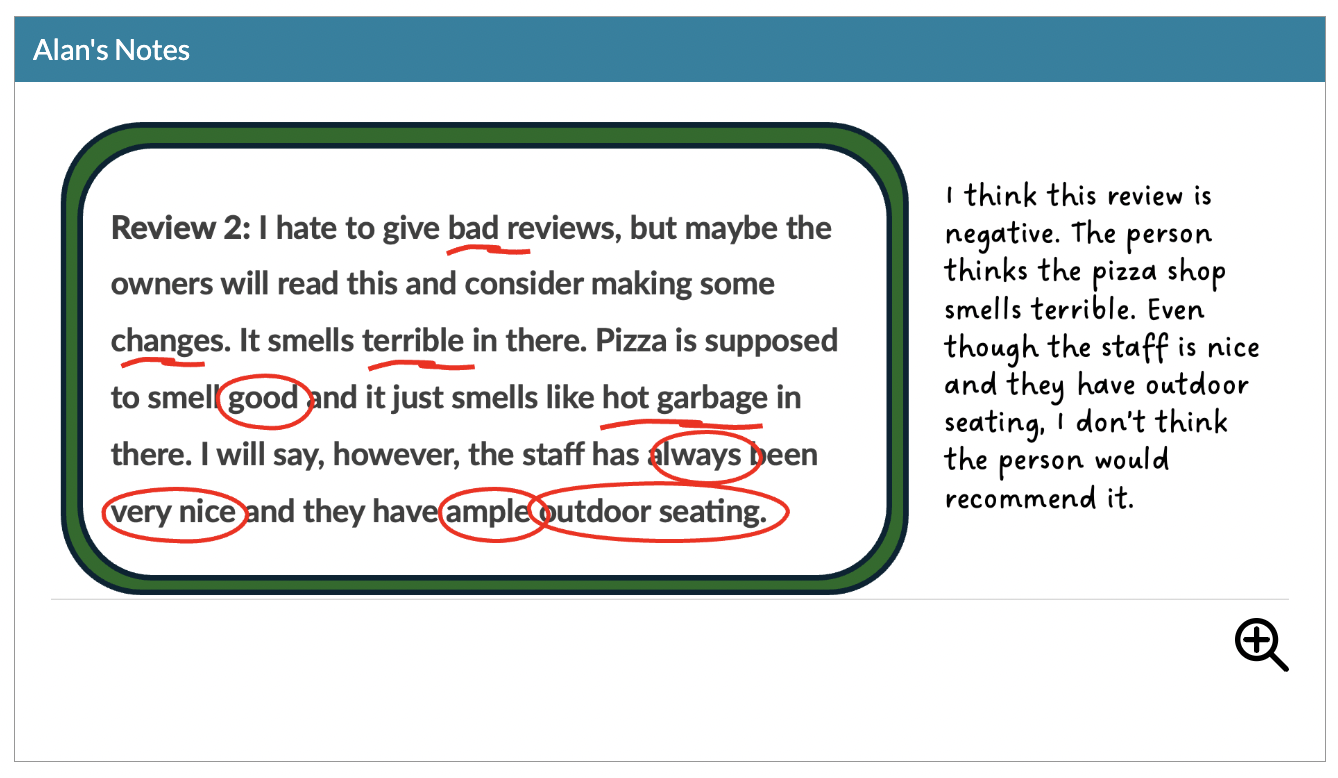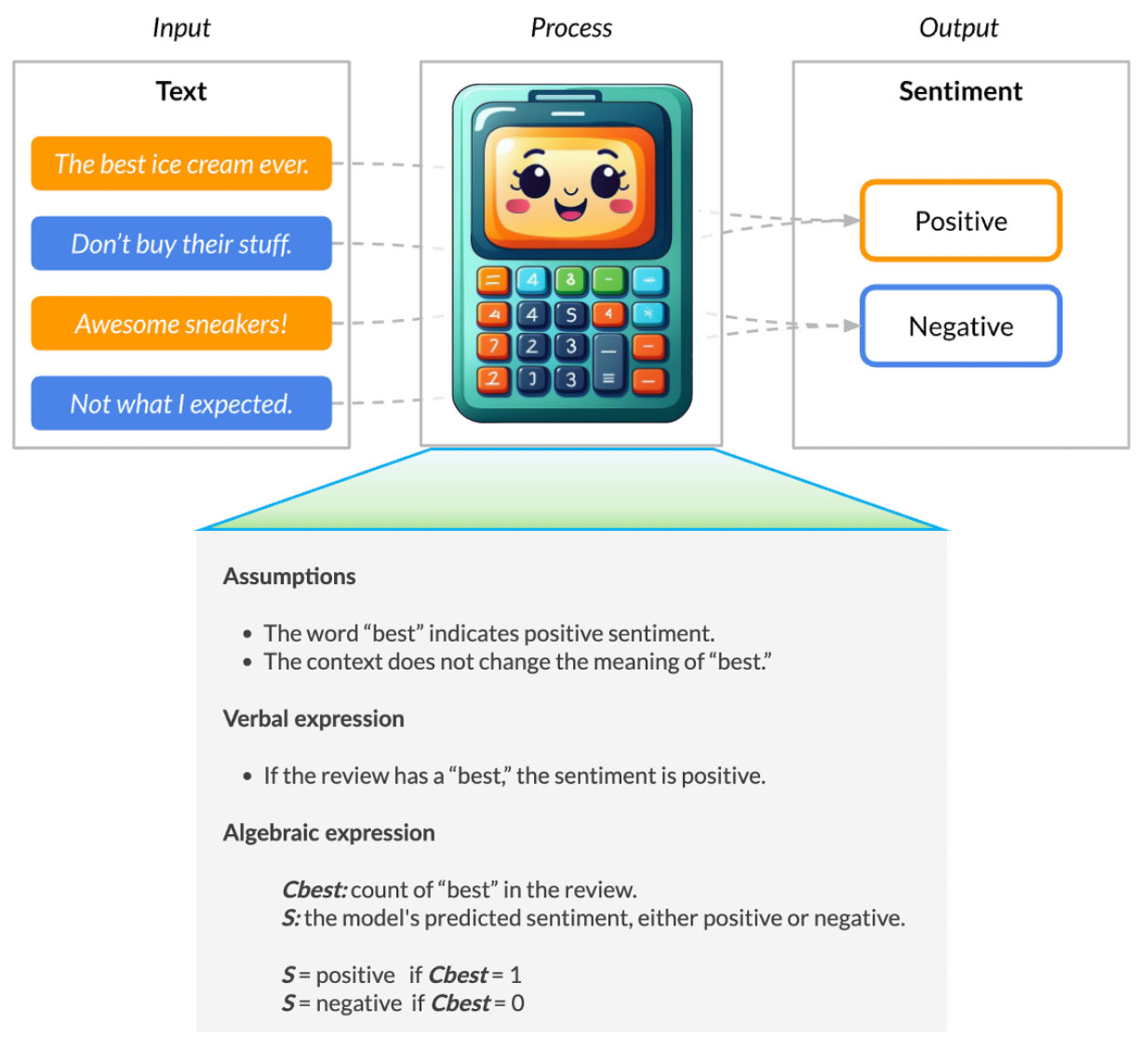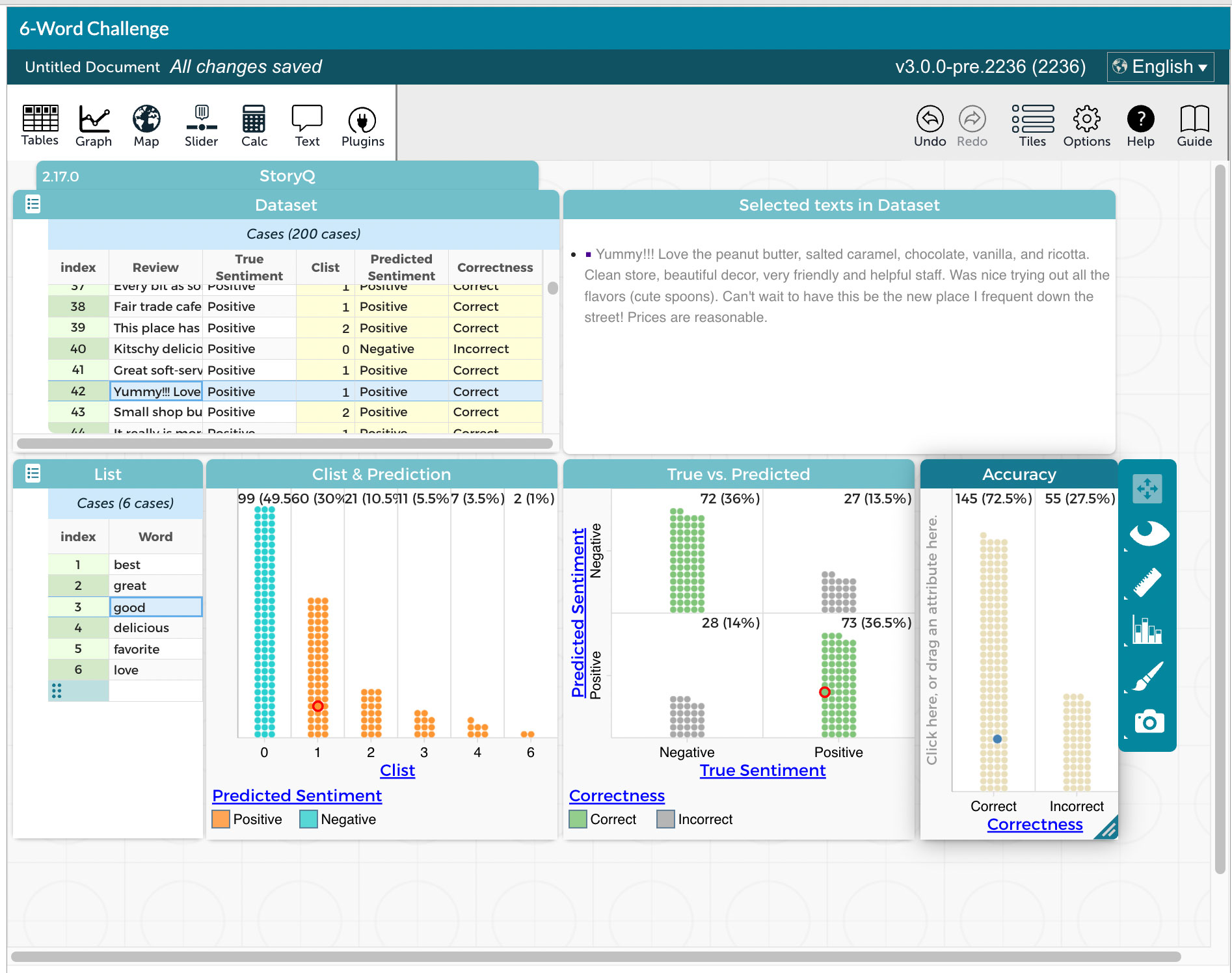What does learning about artificial intelligence have to do with learning math? A group of enthusiastic middle and high school students are finding out, thanks to a new supplemental program offered this spring at the Florida Virtual School! As an extension of their Algebra 1 course, students are learning to build an AI model that can predict the sentiment expressed in text (for instance, the word “fabulous” in a restaurant review) using the math they’re learning in Algebra 1.
The Artificial Intelligence Education for Virtual Schools project was funded by the U.S. Department of Education to help young people develop artificial intelligence literacy and interest in AI-related careers. We designed the self-paced AI in Math supplemental program to introduce students to real-world AI applications, teach how AI is being used in various industries across the country, and showcase some of the myriad careers that are already taking advantage of AI apps.
When we discussed recruiting students with our partners at the Florida Virtual School (FLVS) and the University of Florida, we weren’t sure how many students would voluntarily sign up to complete extra academic work, especially at the end of the school year. We announced the program to all students in Algebra 1 and were thrilled that nearly 200 students from grades 6-12 applied.
These virtual school students are enrolled in a variety of educational settings—including students who are entirely homeschooled, to those who attend traditional schools but are looking for extra enrichment, to those at specialized schools, such as one student who attends a pre-professional ballet school. What do these students have in common? Though they have not yet graduated from high school, they are all thinking ahead and have a desire to learn about AI as they pursue dreams to become computer scientists, digital artists, fighter pilots, bakery owners, lawyers, and, yes, dancers.
What is AI in Math?
In the five-activity AI in Math online curriculum, students learn how AI is created and are scaffolded in building their own models. Students move from a position of AI consumer to AI creator.
Activity 1: Intro to AI in Math. In the first activity, students are introduced to sentiment analysis and the building blocks of simple models, such as inputs and outputs. They try analyzing several restaurant reviews, looking for text-based clues that might skew a review toward the positive or negative direction.

Students are asked to circle positive elements in a review and underline negative ones.
Activity 2: Join Team Q! In the second activity, students join “Team Q” with virtual teammates Alan and Dorothy. Working together, Team Q designs a simple model to process text, converting a verbal expression to an algebraic expression. At the end of the activity, students are introduced not only to the real Alan and Dorothy (named after Alan Turing and Dorothy Vaughn) but to other pioneers in the field of AI.
Students build an algebraic expression to process the model’s inputs.
Activity 3: Even Better Models. In the third activity, students move from counting text features by hand to using StoryQ, a sentiment analysis tool built in Concord Consortium’s CODAP environment. With StoryQ, students can quickly analyze hundreds of reviews, make graphs, and test their models.

Using StoryQ, students build a model and analyze the model’s performance using graphs.
Activity 4: Mixed Reviews. In the fourth activity, students build an increasingly complex sentiment analysis model that can identify both positive and negative features in a review. Students are also introduced to examples of real-world problems being solved by AI.
Activity 5: Words Have Weight. In the final activity of the sequence, students consider the weight of certain words in their model. Is “best” better than good? Is “worst” worse than bad? Students run multiple experiments to improve the accuracy of their model and are prompted to explain their reasoning throughout. Students also have the opportunity to investigate several other types of text classification models that predict if text belongs to different categories.
Student feedback
As the spring research cohort of students work through the AI in Math module, six members of our project team are reading through students’ answers and providing constructive feedback through an online dashboard. In addition to offering personalized feedback, we host weekly Zoom check-in meetings for students to ask questions or get extra support.
At a recent meeting, one enthusiastic student who joined the call said she didn’t have any questions about the curriculum. Instead, she said:
“I just wanted to tell you how much I am loving the AI module! It is just so cool and so great to learn about AI and to be able to make my own models. Plus one day be able to make my own and be able to use that for computer science or something in the world. I can’t wait to learn more. I also really like robotics, too, and it’s also really great to use my robotic skills, to be able to use my algebra skills, to be able to put all my skills, and math skills, to the test with AI!”
What’s next?
Many schools are looking for ways to help students learn about AI. EdWeek has done a deep dive into math and artificial intelligence, publishing multiple perspectives on the topic, including an article featuring our AI in Math project.
Our goal is to continue to integrate AI concepts and practices into Algebra 1. Next year, we will develop an extended curriculum that includes modules on machine learning and neural networks. We are also working with university partners to build AI-powered learning companions that can help students in real time as they work their way through the activities. In this way, future students who use the AI in Math materials will be learning about AI—and be supported by AI—simultaneously.
If AI can adaptively teach every student individually, does this mean traditional classroom teachers will become obsolete, or will their roles transform into something entirely unexpected? How might this shift impact the ethics and quality of education in virtual schools?
Sorta related, I jotted something down, this thing might be worth a quick look, thought I’d share.